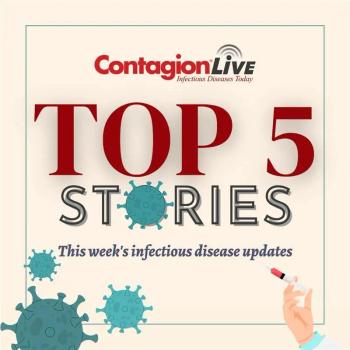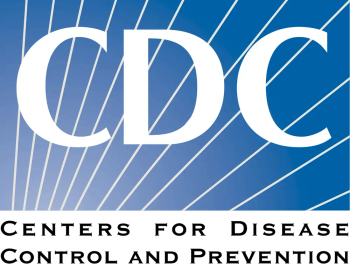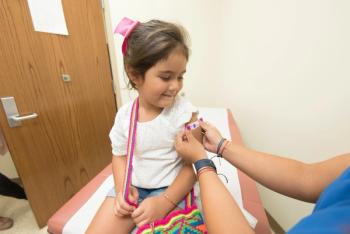
A Faster, More Powerful Way to See Disease

Yale School of Medicine’s Department of Pathology has embraced the booming field of digital pathology, where digital scanners and AI are improving speed and accuracy.
If the work of pathologists evokes images of physicians hunched over microscopes examining pink-stained glass slides, it’s time to update that vision. With the acquisition of two digital scanners that produce whole slide images of histology slides, Yale School of Medicine’s Department of Pathology has entered the booming field of digital pathology. Those images are the fundamental tool that pathologists use to investigate bodily fluids and tissues.
Whole slide image (WSI) scanners produce digital high-resolution images that can be reviewed on monitors instead of microscopes. These images, coupled with rapidly evolving artificial intelligence (AI) algorithms, provide clinical data that can mean faster and more accurate diagnoses, as well as the ability to predict the course of disease. The applications and benefits of digital pathology include informing treatment for an individual patient, ensuring safety in hospitals, providing high-quality standardized care in multihospital networks, and providing access to health care in underserved parts of the world.
“We see this as really transformative. It’s almost impossible to quantify it right now,” says Chen Liu, MD, PhD, Anthony N. Brady Professor of Pathology and chair of the Department of Pathology. “It’s my prediction that any academic department that doesn’t have a digital pathology practice will be obsolete in the next 10 years.”
Forging ahead
The current digital pathology boom started in earnest in 2017 after the FDA approved the marketing of WSI scanners for rendering primary diagnoses. Until then, the scanners’ predominant applications were nonclinical, like archiving and research. The technology has its roots in telepathology, which starting in the 1960s sought ways to transmit scans of tissue slides electronically. Efforts were also under way to improve the quality of scans; by 2000, WSI could produce scans equal in resolution to those of the original slides.
But those developments don’t mean that the entire process has gone high-tech. The essential first step to scanning still requires making histology slides the old-fashioned way.
“In anatomic pathology, we get tissue from patients; we dice it up, embed it in paraffin, and cut very thin sections from it. Next, it goes on glass slides and gets stained. Then we look at it under a microscope and make a diagnosis,” says Sudhir Perincheri, PhD, MBBS, assistant professor of pathology and director of digital pathology. “It was possible for a long time to take snippets—put one area under the microscope and take a picture. Now, we can not only image the whole slide, but also do it in a way that allows us to zoom in, zoom out, and basically replicate our work over the microscope.”
Speed and AI
The department’s new scanners can image a slide in two to three minutes and run up to 450 slides at a time. Before WSI, scanning a single slide could take up to 24 hours. “Technologically, it has become feasible to digitize slides at a large scale for clinical workflows and make them available for review rapidly,” Perincheri says. “If there was a lung biopsy done today, it will go in the scanner at three in the morning, and it’ll be ready for the pathologist to review at eight in the morning.”
And, Perincheri added, because AI can “see” things missed by the human eye, it can unearth surprisingly large amounts of information. “Because these are gigantic files, there’s a lot of unmined data,” he says. “One of the strengths of AI algorithms is pattern recognition. If you take a big enough data set of slides and feed it into the algorithm, and you tell the algorithm this is how these patients’ conditions behaved over time, the algorithm is able to pick out patterns that predict disease behavior over time.”
This is a rapidly evolving area, says David Klimstra, MD, Louis J.M. Zinterhofer, MD professor of Pathology and the department’s chief digital pathology and AI strategist. Just in the past two years, a variety of companies have developed generative AI models trained on millions of histology images. “We can use these models as a framework to train for very specific, important downstream tasks to develop our own AI models, without the need for the huge quantities of data required to train pathology AI models in the past,” says Klimstra. “We can then implement them for our own use and potentially disseminate them for others to use as well.”
These sorts of models could identify small or subtle areas of importance on a slide, bringing them to a pathologist’s attention for review. They could also quantify instances or the intensity of a staining reaction on a given pathology sample, aspects that are often time-consuming or inherently subjective to the human eye.
“These tools also enable the possibility of developing ‘digital biomarkers,’” says Klimstra. He envisions a future where AI helps, say, predict how a tumor might respond to a drug or whether it will metastasize. “My personal hope is that by using the data we have at Yale, we can develop digital biomarkers that will change the practice of pathology.”
Klimstra notes that Yale offers several advantages for achieving this, including a wealth of data and strength in data science that he hopes to tap into through cross-campus collaborations.
Portability
Digital pathology also brings huge gains in accessibility and portability. Because slides no longer need to be shipped by courier to a path lab, waiting time is reduced, as is the likelihood of lost slides. A pathologist with a laptop and a Wi-Fi connection can access high-resolution scans during conferences, in the classroom, or at a tumor board meeting.
“I see the opportunity for workflow efficiencies, including quicker patient diagnoses, that are really great gains, especially in the cancer care setting,” says Angelique W. Levi, MD, vice chair and associate professor of pathology, and director of Pathology Reference Services. “The physical slide no longer has to travel, so as we collaborate with YNHHS delivery networks across the enterprise, and grow and expand beyond the [Yale] system, we can share case images, and more pathologists can have access to patient specimens or ‘slides’ in a central place, digitally. We have so many opportunities for clinical and educational case-sharing, second-opinion consultation, quality control review of cases in-house, and many more sets of eyes with subspecialty expertise.”
Digital pathology plays an important role in a hospital system, she says. “Hospitals use pathology to guide patient safety and inform safety data, and digital pathology can efficiently standardize care and subspecialty expertise across a system.”
In a multihospital system, like Yale New Haven Health, says Liu, digital pathology is critical to maintaining a high standard of care across different institutions. “This will allow all pathology units systemwide to come up with the same quality of diagnostics.”
That standard of care, Levi adds, can travel around the world. “Part of what excites me is not just improving the standard of care here at Yale but having that extend into communities beyond academic institutions. This increases the access to this technology in a way that can have the greatest impact and extend this care, perhaps, in other countries where there isn’t subspecialty expertise or training, or even a pathologist.”
A Powerful Education Tool
When it comes to teaching pathology, Perincheri sees an exciting time ahead. Pathologists and their residents or other physicians don’t need to be in the same room hunched over a multiheaded microscope to view a slide “The image is sitting in a server somewhere, so it doesn’t matter if I’m here and my colleague is in New York or Boston, we can all see the same thing.”
Residents will also learn how to mine data from the slide. “There are tools now where we can point out details and say, ‘If you look at this tissue biopsy, it has a, b, and c features; hence, we render a particular diagnosis.’ We can annotate slides; we can enrich them with all sorts of data, such as demographic data and outcome data.”
The fundamentals of histopathology and morphology will not change, says Levi. But now residents can learn from digital scans rather than glass slides. “They are becoming more and more comfortable looking at tumor board cases that have been scanned or accessing scanned images, and getting their feet wet in that way,” she says. “It’s like we’re creating a digital library of our interesting entities that they would otherwise have learned about in a book or an atlas or a glass slide set.”
Extending WSI's reach
Yale’s pathology department has scanned about 355,000 whole slides since 2022 and plans to increase the rate of scanning until all of the slides are digitized, enabling fully digital review of all pathology cases. “We have prioritized cases that we want to scan, such as lung and thoracic biopsies,” says Perincheri. “Right now, the barrier is cost—hardware, image management software, storage, high-resolution monitors. And there is no insurance reimbursement for that.”
However, that could change. A billing code has been created for digital pathology, even though insurers are not yet offering reimbursements. “If historical precedent is any sort of indicator,” Perincheri says, “we think that in about three or four years, probably less, we should start seeing reimbursement for digital pathology. This is the future. If you don’t become digital, you become obsolete.”
This story was originally published on the Yale School of Medicine's website and in the Yale Medicine Magazine.
Newsletter
Stay ahead of emerging infectious disease threats with expert insights and breaking research. Subscribe now to get updates delivered straight to your inbox.

















































































































































































































































































